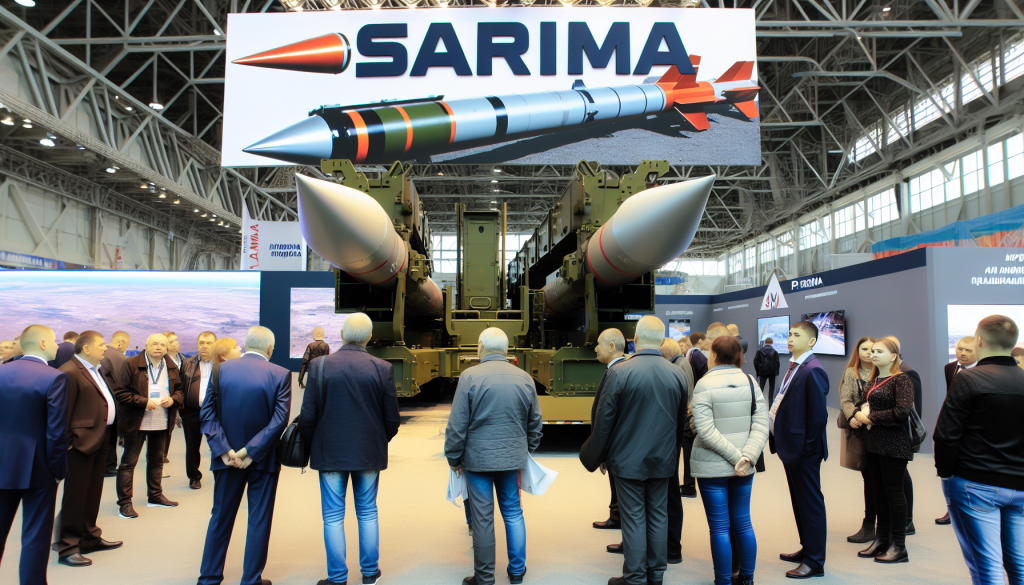Unveiling the Sarma: Russia’s Latest Advancement in Multiple-Launch Rocket Systems
During a recent exposition at the Motovilikhinskiye Zavody plant in Perm, a state-of-the-art multiple-launch rocket system (MLRS) known as the Sarma was unveiled. This impressive embodiment of military innovation is designated the 9A52-4 Sarma, uniquely mounted on an 8×8 KamAZ-63501 truck chassis. The system features a robust combat package equipped with six 300 mm launch tubes, presented to an audience of senior officials eager to witness the latest developments in Russian military technology.
Evolution of the Sarma MLRS
The Sarma MLRS represents a significant evolution from previous designs, continuing a lineage that began with KamAZ-based systems. Developers have stated that the Sarma is part of a comprehensive modernization effort aimed at enhancing Russia’s long-range rocket artillery capabilities. Among its key features are modular launch packaging and guided munitions, combined with enhanced mobility afforded by the truck-based design. The conceptual groundwork for this advanced system traces its roots back to the Kama project initiated in the early 2000s, which sought to create a lighter, more mobile 300 mm launcher using the KamAZ-6350 chassis instead of heavier tracked vehicles.
Historical Context and Design Development
Previous prototypes of the Sarma were showcased at various defense exhibitions, including MAKS 2007, though they did not progress to large-scale production during that period. Yet, the lessons learned from prior modernization programs, particularly upgrades seen in the Tornado-S and Uragan-1M systems, have shaped the current design of the Sarma. These existing systems established a foundation for unified transport-launch containers and improved automated fire control technologies, which are now integral to the Sarma’s operation.
Technical Specifications
Sarma’s technical specifications remain closely aligned with earlier designs, built upon years of engineering advancements. The previous transport-launch container measured approximately 7.5 meters in length and weighed around 6.2 tonnes, highlighting a focus on efficient logistics. The new Sarma variant employs the reliable KamAZ-63501 chassis, featuring a protected cabin that enhances ballistic resistance, ensuring crew safety. In terms of dimensions, the vehicle measures roughly 11.2 meters in length, 2.5 meters in width, and 3.15 meters in height, with a ground clearance of approximately 390 millimeters, contributing to a combat weight in the mid-24 tonne range.
Engine and Mobility
Equipped with a powerful V8 diesel engine that generates around 360 horsepower, the Sarma boasts an impressive on-road range close to 1,000 kilometers. This capability significantly enhances the system’s strategic mobility, making it suitable for a wide range of logistical operations. The design prioritizes speed and maneuverability, enabling rapid deployment and relocation in the field—critical attributes for modern military operations.
Tactical Advantages and Operational Efficiency
Although the Sarma carries fewer rockets than some larger tracked systems, its tactical mobility and quicker setup times confer distinct operational advantages. The design includes dedicated transport-reloader vehicles, allowing for sustained fire capabilities while enhancing counter-battery survivability. This enables rapid firing and displacement, which could redefine traditional artillery tactics by emphasizing the effectiveness of modular wheeled launchers accompanied by efficient resupply processes.
Compatibility with Modern Munitions
The Sarma is engineered to utilize the contemporary Russian 300 mm rocket family, compatible with various types of munitions. It supports legacy shells with a range nearing 70 kilometers as well as guided variants capable of reaching distances up to 130 kilometers. These guided rounds are equipped with cutting-edge navigation technology, incorporating both inertial navigation systems and satellite corrections, ensuring increased precision while minimizing dispersion during deployment.
Looking Ahead: Future Innovations
As the Sarma MLRS continues to evolve, developers are exploring modular launcher designs that could potentially increase the number of launch tubes to ten or even twelve on the wheeled chassis. This potential enhancement is contingent upon overcoming current challenges related to weight and stability. This focus on adaptability and modernization aligns seamlessly with broader defense strategies, suggesting a promising future for Russian artillery capabilities and ongoing advancements in military technology.
The Sarma MLRS stands as a testament to Russia’s commitment to advancing its military capabilities, reflecting an era where speed, precision, and adaptability become paramount on the battlefield.

